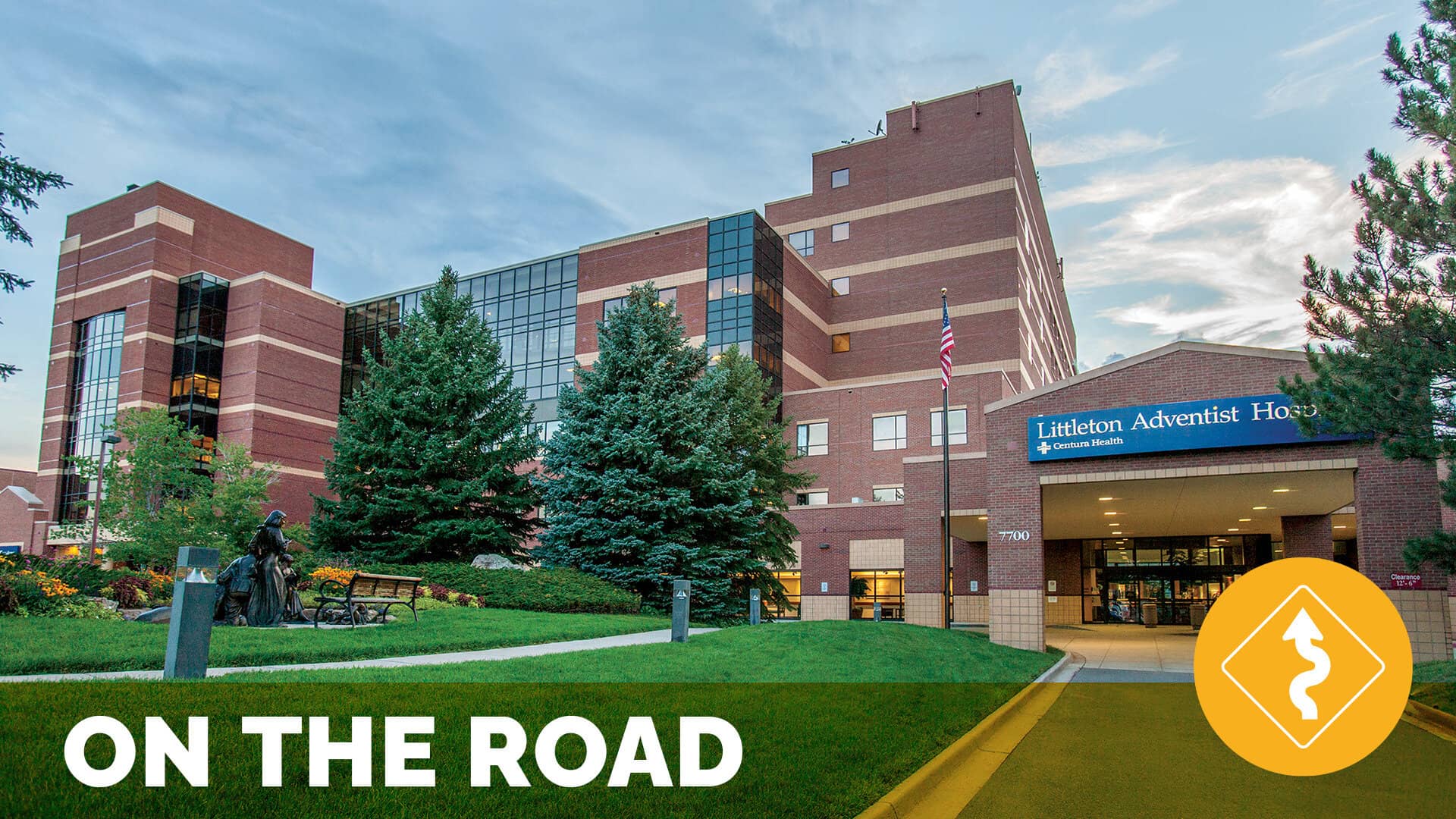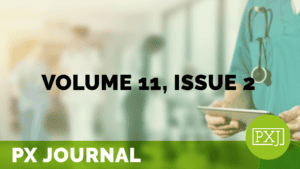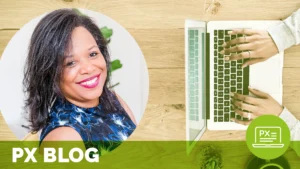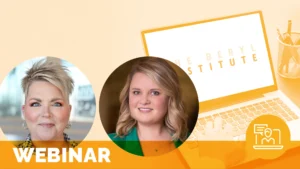A Journey to Excellence in Patient and Associate Experience

On the Road with Littleton Adventist Hospital – February 2017
by Stacy Palmer
Our latest On the Road took us to Colorado’s front range to visit Littleton Adventist Hospital (LAH). A full-service medical center south of Denver that has provided compassionate health care for more than 25 years, LAH is one of 17 hospitals in the Centura Health system.
My gracious host for the visit was Anne Clouatre, Director, Patient Experience and Service Excellence. Clouatre began her career with Littleton 24 years ago in emergency medical services, an area still near and dear to her heart as she believes deeply in the power of partnering with local EMS agencies to support an aligned, patient-centered approach to care. In 2011, she took a broader role focused on service excellence and process improvement where she has helped build and implement a patient experience and service excellence focus throughout the organization.
Clouatre and her direct team report to LAH’s Chief Nursing Officer and south Denver group Vice President of Patient Care Services, Rhonda Ward. However, Clouatre is careful to acknowledge that, “the whole hospital is part of the patient experience team.”
To frame their patient experience efforts, LAH adapted The Beryl Institute’s definition of Patient Experience to reflect their culture and community. They define patient experience as: The sum of all interactions shaped by our culture of ownership that influences patient, family, visitor and community perceptions across our continuum of care.
SHARE the Spirit
Reflecting that culture of ownership, Clouatre helped advance an Adventist Health System program to reinforce LAH’s SHARE principles to new and existing employees. SHARE stands for Sense people’s need, Help each other out, Acknowledge people’s feelings, Respect the dignity and privacy of others, and Explain what’s happening. The SHARE training program reinforces those principles and helps staff connect with how they personally relate to the hospital’s mission, vision, values, and culture of ownership core competency.
I was invited to participate in a SHARE class that was part of LAH’s new hire orientation process, and I was impressed by the thoughtful approach in reinforcing the SHARE principles by tying them directly to patient experience and care excellence.
Seventeen Littleton staff members make up the SHARE facilitator team, rotating responsibility as they deliver the program to new team members and existing staff. They represent a cross-section of departments from areas like medical imaging, nursing, public relations, speech pathology, mission and ministry, human resources, trauma, therapies, and rehabilitation. In addition, the SHARE team continually recruits new participants from the classes to join the faculty. I participated in a class led by Shea Smith, Patient Experience Outcomes Educator and Lauren Brendel, Marketing and Public Relations Manager. Through storytelling and activities, the co-facilitators engaged participants, making the content relevant to staff members from various departments and roles within the organization.
All meetings at LAH begin with a prayer, reflection or patient story, and the SHARE class was no exception with a participant beginning the meeting by reading a prayer aloud. Following the prayer, the facilitators reinforced Littleton’s mission to extend the healing ministry of Christ by caring for those who are ill and nurturing the health of the people in our community and reinforced the organization’s core values of compassion, respect, integrity, imagination, spirituality, stewardship, and excellence. They allowed time for the class members to share what drew them to LAH and into their respective lines of work in general. It was inspiring to listen to these new team members share their great respect for the hospital and its reputation in the community. I could feel the pride from Smith and Brendel as they listened. Smith offered, “The ‘secret sauce’ here is we care for each other [team members] as much as we care for our patients.”
The SHARE class also included references to Gary Chapman’s Love Language model based on his 1995 book, The Five Love Languages: How to Express Heartfelt Commitment to Your Mate. Smith and Brendel reviewed the five love languages and provided recommendations on how participants can recognize patients’ love languages and how they can adjust behaviors to better care for patients based on that knowledge.
- Love Language How do I know if this is a love language of my patient?
- Words of Affirmation They give you, your colleagues and/or LAH compliments; they respond positively to encouraging words.
- Acts of Service They appreciate when you arrange their room to their liking; they appreciate when they see you doing things – like helping with a meal, contacting a loved one or assisting them with their requests.
- Receiving Gifts They enjoy receiving small tokens of support; a book, their favorite magazine, or if within parameters of dietary allowances, their favorite food or beverage.
- Quality Time They enjoy speaking with you and spending time with you; they like to share stories.
- Physical Touch They respond positively to appropriate touch; hand or foot or scalp massage; holding their hand.
The class also included a section on the power of gratitude citing that people who take time to notice and reflect upon the things they’re thankful for experience more positive emotions, feel more alive, sleep better, express more compassion and kindness and even have stronger immune systems. Participants were provided a list of 14 ways to practice gratitude in their personal and professional lives.
A fun component to the program was a group exercise in which teams competed to complete a jigsaw puzzle. However, each team quickly realized they were missing some pieces and had some that didn’t belong to their puzzle. Teams had to walk around the room and work with other groups to find or trade pieces. In the end, all puzzles were complete and the facilitators reinforced that all departments within the hospital must work together to succeed. Or as Smith summarized it, “It takes the whole house to make a difference.”
From the examples listed above to dealing with stress, managing challenging situations and communication best practices, the SHARE class provides relatively basic life coaching/advice for participants, but it does so in a way that reinforces LAH’s commitment to the well-being and success of its team members. By illustrating this type of caring and compassion, both during employee onboarding and through ongoing training, LAH encourages a culture of trust and commitment that is reflected in its approach to patient experience.
I especially appreciated the simplicity and significance of a list provided to the class on
10 Things You Can Do to Enhance Our Patients’ Experiences:
- Knock before entering the patient’s room
- When you go into patient’s room, acknowledge everyone in the room
- Introduce yourself to the patient and other people who are present
- Shake the patient’s hand
- Sit at bedside at eye level with the patient
- Use the words ‘concern’ and ‘comfort’ in your communication
- Keep in touch with the patient especially about changes to the care plan
- Ask ‘What questions do you have?’ rather than ‘Do you have any questions?’
- Treat others as you would your loved ones
- Smile
Again, these are very simple things, but sometimes employees need reminders of the basic behaviors that can have significant impact in their roles. Often in addressing patient experience, organizations focus on a high-level approach sharing the philosophies and evidence-based theories – all of which are certainly important, but coupling those, as LAH has, with the simple reminders that we’re humans caring for humans, can have lasting impact.
One team member shared an analogy of Christ and his proactive approach when he looked at people and saw they were afraid. The goal of the staff at LAH is to show that type of love and attention. In the words of Brent Spenst, CEO, “Our everyday is our patients’ once in a lifetime.”
Littleton has many programs in place to help make those experiences the best they can be.
Patient Experience and Service Excellence Teams: Day and Night
LAH has two Patient Experience and Service Excellence teams. The daylight team, including 45 members representing nearly all departments within the hospital, is focused on a journey to achieve the Malcolm Baldrige National Quality Award for excellence and are currently working through Rocky Mountain Performance Excellence (RMPEx) to achieve set milestones towards that recognition. Team members are aligned to mirror the Malcolm Baldrige criteria focused on the customer service category. Other aligned teams at the hospital are focusing on other areas including leadership, strategic planning, workforce, operations, measurement, analysis and knowledge management with all groups aligning with results . In 2014, the team’s efforts led to LAH receiving RMPEx’s Timberline award.
In addition, LAH realized an opportunity to include voices from later shifts in patient experience improvement efforts and created the Nightlight team that meets at 1:00am. With monthly meetings including anywhere from 8 to 20 participants, this group has already made significant recommendations and changes for staff and family including audits for culture of ownership, recommendations for healthy food choices as well as the addition of food trucks four nights per week to provide variety in meals for both staff and family members.
“These teams connect with the humanness of our work, identify and celebrate our strengths and uncover our vulnerabilities to determine how we can develop strength and resiliency to better serve ourselves, our peers and everyone in our care,” said Clouatre.
Patient and Family Collaboration Council
I had the pleasure of joining a meeting of LAH’s Patient and Family Collaboration Council and was inspired by both their appreciation for the organization and commitment to help drive improvement. As one family member said in referring to her husband’s treatment at LAH, “We are forever grateful for the care received in this hospital and we can’t give back enough.”
Similar sentiments were echoed as each patient and family member shared their stories, some positive and with favorable outcomes and others harder to hear for the staff members present, but equally reflective of the important need and purpose for this group. “The stories of appreciation and lives changed mean a lot,” said Alan Verrill, Chief Medical Officer. “But in all cases, we’re in this together with you.”
As part of the bimonthly meeting Verrill presented about LAH’s intent around disclosures and Just Culture algorithm to provide council members insight into the hospital’s policies and procedures. Patient and family members appeared relieved, and perhaps even thankful, for Verrill’s acknowledgement that mistakes can (and do) happen in the healthcare and processes are in place to determine culpability and ensure appropriate disclosure.
This transparency was significant for this group committed to help improve the organization, some while still working through negative experiences and outcomes themselves. In fact, the balance on this council impressed me as LAH acknowledged the need to include a variety of perspectives, backgrounds and experiences.
From the development of a ‘Blessing Bag’ program to provide necessities to loved ones unexpectedly spending the night to development of a comprehensive ‘Family and Visitor Information Guide,’ this council has been a valuable resource to ensure the patient and family voice is heard and drives overall patient experience efforts. The council also assisted with patient-perspective input for LAH’s recent transition to the Epic electronic health record and worked with staff to evaluate questions on the hospital’s Press Ganey satisfaction survey.
Multidisciplinary Rounds
One of the first things Verrill introduced when he arrived at LAH in 2015 was Structured Inpatient Bedside Rounding (SIBR) – a concept developed by Emory University Hospital. With SIBR, all the members of a unit-based team responsible for the care of a patient visit him or her together each day. The members of the team include the attending physician, the primary nurse, and any involved allied health professionals (e.g., pharmacy, social services, palliative care). During these rounds, team members cross-check perspectives and a quality-safety checklist with the patient, family, and one another, and then develop a shared care plan for the day and create a specific discharge plan.
Verrill acknowledged he received some opposition from staff when he initially brought up the idea, but after an 8-hour Lean event day in which teams brainstormed what it would take to engage in team-based rounds, even LAH’s physicians were asking, “Why aren’t we doing this in the room?”
In April 2016, LAH reconfigured so that all units were geographically based together and simultaneously implemented SIBRs. Teams began meeting at 9:30 AM each morning to begin rounds, but purposefully do not talk unless necessary until they are in front of patients. First nurses and physicians go in to introduce themselves and conduct a brief examination. Then the rest of the team is invited in and surrounds the patients bed while the physician sits. As a group, they have a conversation with the patient on the care plan, discussing any goals or concerns for the day.
Verrill says feedback from staff has been very positive, and length of stays and untoward events have decreased since the implementation. While the process is time-consuming at the beginning of the day, afternoons are easier because of the planning and coordination. One physician acknowledged, “I only did it initially because I had to, but I wouldn’t change it. I never thought it would work, but I love it.”
Healing Arts
The Healing Arts program at LAH provides patients, family members, staff members and the community with an environment that calms and revives the senses during times of stress and anxiety. Including visual arts, music, massage, nature and community outreach, the program is fully supported through community donations to the foundation and exclusively features local artists.
Citing that music therapy can reduce stress and aid in the healing process, LAH brings in certified music therapists to play soothing therapeutic music at patient’s bedsides. They also invite regional musicians, including local students, to perform free concerts in public areas of the hospital.
In the corridor that connects the hospital’s main lobby and the Outpatient department, a rotating exhibit of artwork by regional artists and students from local schools reflects the natural beauty of Colorado. The artwork not only creates a connection with the surrounding community, it also has a restorative and calming effect on the senses of patients and visitors alike.
Patient and Family Thank You Cards
Continuing with the spirit of gratitude, LAH implemented a process of distributing thank you cards to patients and families upon discharge. The cards have a pre-printed message expressing appreciation for the “opportunity to care for you” and notify visitors to be on the lookout for the Press Ganey survey so that the hospital can capture their feedback to help make the hospital experience even better for future patients and family members. The cards stay in a patient’s chart throughout their stay so that all team members have an opportunity to sign and/or write personal messages to the patients or family members. The discharge nurse provides the card to patients along with any prescriptions or follow-up information.
Journey to Excellence
In my two days at LAH, I was inspired by their commitment to patient experience and motivated by the progress the organization has made to enhance their efforts through employee engagement, patient and family engagement, process improvement, and community involvement.
In addition to the efforts highlighted above, I learned about the extensive reward and recognition programs, such as the DAISY Award, IRIS Award and SHARE-related feedback cards. I heard about their extensive volunteer program led by Catherine Bartley, Manager, Volunteer Services who proudly stated the have grown from a team of 85 adult and 10 teens to now more than 300 volunteers strong. I also listened to a Morning Moment – a motivational voicemail by a staff member daily and sent to employees. The team shared how patient experience works closely with marketing to rapidly address patient feedback through surveys and social media and how the hospital contributes to the overall community.
I applaud Littleton Adventist Hospital’s efforts and commitment to, as their vision states, fulfill a covenant of caring for our communities with excellence and integrity to become their partner for life.
Related content
-
 Patient Family & Community Engagement
Patient Family & Community EngagementPrimary Care Productivity and Patient Satisfaction Community Practice: What is the Relationship?
Research has shown a consistent positive association between patient and provider experience and improved patient outcomes and safety. There is a belief that patient satisfaction and physician productivity are competing interests.
Learn more -
 Patient Family & Community Engagement
Patient Family & Community EngagementA Passage of Advocacy and Listening: How My Name and Experiences Shaped My Purpose in Healthcare
By Typhany Morrison-Brooks I was born Madelyn Morrison without a middle name because my mother wanted me to have the space to choose one someday. I arrived a couple of months early, weighing just 4 pounds. They had already picked “Madelyn” for me, but as I lay in the incubator, I flipped myself over, earning
Learn more -
 Culture & Leadership | Staff & Provider Engagement
Culture & Leadership | Staff & Provider EngagementUnleashing Collective Potential: The Power of Team-Based Leader Rounding in Elevating Patient Care
During this webinar, attendees will gain insights into strengthening their current leader rounding program by adopting a collaborative team-based approach, employing targeted and purposeful questioning and implementing a structured escalation and resolution framework. Participants interested in establishing a new leader rounding initiative will find this program equally valuable in providing essential guidance and best practices
Learn more
